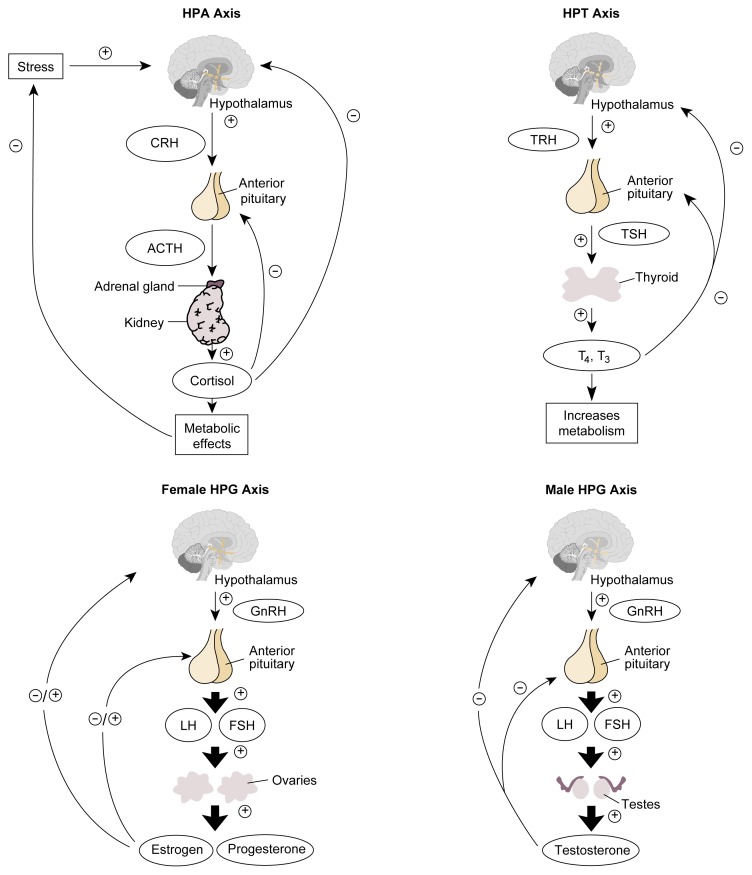Figure 3.
Schematic representation of the HPA, HPG, and HPT axes. For each system, the hypothalamus secretes releasing hormones (i.e., CRH, GnRH, and TRH) that act on the pituitary gland. In response to those stimuli, the pituitary gland releases ACTH, gonadotropins (i.e., LH and FSH), or TSH. ACTH activates the adrenal glands to release cortisol, which induces metabolic effects. Cortisol also acts back on the hypothalamus and pituitary gland by negative feedback. LH and FSH in women stimulate the ovaries to produce estrogens and progesterone. Depending on the phase of the menstrual cycle, those hormones act back on the hypothalamus and pituitary gland in either a stimulatory or inhibitory manner. In men, LH stimulates the testes to release testosterone, which feeds back on the hypothalamus and pituitary. Finally, TSH stimulates the thyroid gland to produce the thyroid hormones T3 and T4, both of which increase cell metabolism as well as feed back on the hypothalamus and pituitary.
NOTE: = stimulates; = inhibits; ACTH = adrenocorticotropic hormone; CRH = corticotropin-releasing hormone; FSH = follicle-stimulating hormone; GnRH = gonadotropin-releasing hormone; HPA = hypothalamic-pituitary-adrenal; HPG = hypothalamic-pituitary-gonadal; HPT = hypothalamic-pituitary-thyroid; LH = luteinizing hormone; T3 = triiodothyronine; T4 = thyroxine; TRH = thyrotropin-releasing hormone; TSH = thyroid-stimulating hormone.

